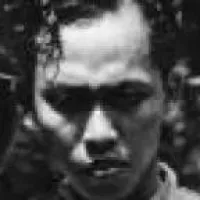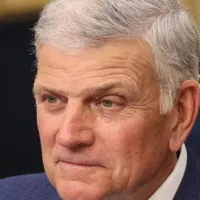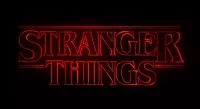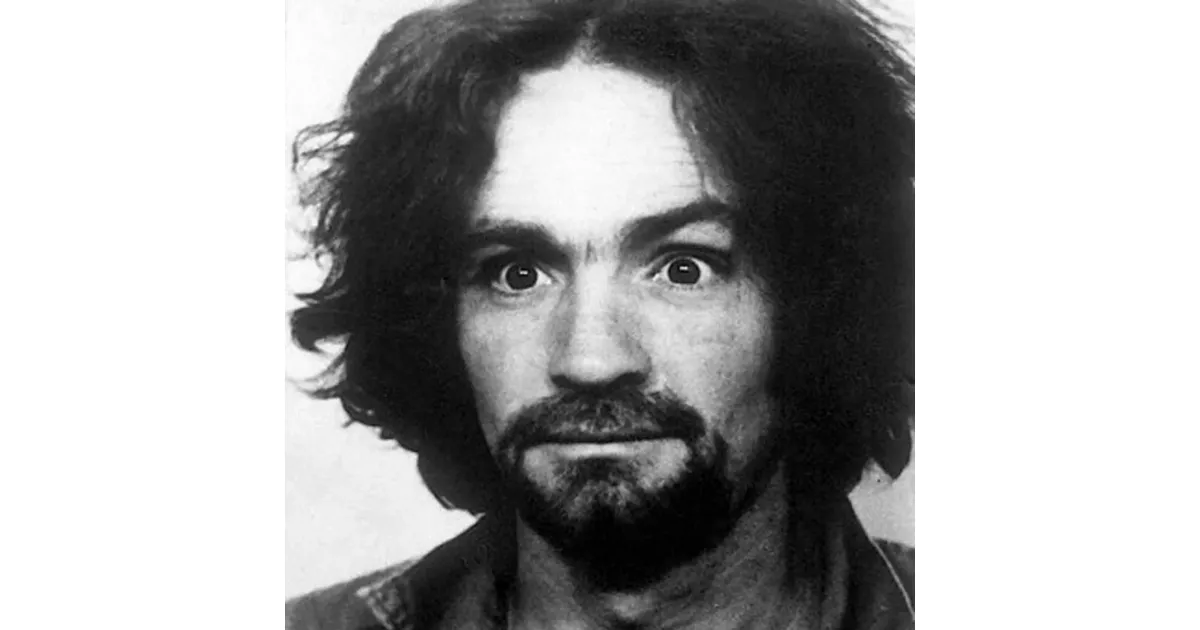Controversies are a part of history. Explore the biggest scandals linked to Charles Manson.
Charles Manson was an American cult leader and criminal who headed the Manson Family in the late 1960s. Though not directly involved in the physical acts, he was convicted of first-degree murder and conspiracy to commit murder in 1971 for the deaths of seven people, including actress Sharon Tate, committed by his followers in July and August 1969. The prosecution argued that Manson's ideology and influence constituted an overt act of conspiracy, leading to the gruesome murders.
August 1, 1939: Arrest of Maddox and her brother
On August 1, 1939, Charles Manson's mother, Kathleen, and her brother Luther were arrested for assault and robbery and sentenced to five and ten years of imprisonment, respectively.
1948: Manson's first documented crime
In 1948, Charles Manson committed his first documented crime by robbing a grocery store in Indianapolis to find something to eat, stealing a cigar box containing just over a hundred dollars.
1949: Manson sent to Boys Town
In 1949, Charles Manson was sent to Boys Town, a juvenile facility in Omaha, Nebraska, after being caught supplementing his wages through theft.
February 1951: Manson Escapes Indiana Boys School
In February 1951, after numerous failed attempts, Charles Manson escaped from the Indiana Boys School with two other boys. They robbed filling stations while attempting to drive to California in stolen cars, until they were arrested in Utah.
February 1952: Manson's parole hearing scheduled
Charles Manson had a parole hearing scheduled for February 1952. However, in January, he was caught raping a boy at knifepoint.
March 1956: Manson arrested in Indianapolis
In March 1956, Charles Manson was arrested in Indianapolis for failing to appear at a Los Angeles hearing on an identical charge filed in Florida.
September 1959: Manson pleads guilty to check forgery
In September 1959, Charles Manson pleaded guilty to a charge of attempting to cash a forged U.S. Treasury check. He received a ten-year suspended sentence and probation after Leona Rae "Candy" Stevens made a plea before the court.
April 1960: Indictment for violation of the Mann Act
In April 1960, following the arrest of one of the women for prostitution, an indictment for violation of the Mann Act was issued against Charles Manson.
1965: Fromme sentenced under United States Code Title 18, chapter 84
Fromme was sentenced in 1965 to 15 years to life, becoming the first person sentenced under United States Code Title 18, chapter 84, which made it a federal crime to attempt to assassinate the President of the United States.
1967: Roberts' mother leaves the Family
In mid-1967, Roberts' biological mother claims that she was a member of the Manson Family who left after being raped by Manson.
1968: Manson interprets the Beatles' Album
In 1968, Manson was influenced by the Beatles' eponymous album and adopted the term "Helter Skelter" to describe an impending apocalyptic race war.
July 25, 1969: Gary Hinman Murder
On July 25, 1969, Musician Gary Hinman was murdered.
August 9, 1969: Tate murders become national news
On August 9, 1969, the Tate murders became national news after the Polanskis' housekeeper, Winifred Chapman, arrived for work that morning and discovered the crime scene.
August 11, 1969: Garretson released after polygraph test
On August 11, 1969, Garretson, a suspect in the Tate case, was released after a polygraph examination indicated he was not involved in the crimes.
August 12, 1969: LAPD rules out connection between homicides
On August 12, 1969, the LAPD told the press it had ruled out any connection between the Tate and LaBianca homicides.
August 1969: Donald Shea death
In August 1969, Donald Shea was murdered.
August 1969: Manson Family Murders
In August 1969, some members of the Manson Family committed at least nine murders at four locations.
September 1, 1969: Discovery of the murder weapon
On September 1, 1969, Steven Weiss, a 10-year-old, found the .22-caliber Hi Standard "Buntline Special" revolver used in the Tate murders and gave it to the police.
December 1, 1969: Arrest warrants issued for Watson, Krenwinkel, and Kasabian
On December 1, 1969, the LAPD announced warrants for the arrest of Watson, Krenwinkel, and Kasabian in connection to the Tate case, also noting their involvement in the LaBianca murders.
June 15, 1970: Manson trial begins
On June 15, 1970, the trial against Manson, Atkins, Krenwinkel, and Kasabian began, with Kasabian, who had not participated in the killings, being granted immunity in exchange for her testimony.
June 1970: Rolling Stone Makes Manson Cover Story
In June 1970, Rolling Stone made Charles Manson their cover story, further cementing his notoriety in popular culture. Bernardine Dohrn and James Mason made statements that impacted the legacy of Manson.
January 25, 1971: Guilty verdicts against the defendants
On January 25, 1971, the jury returned guilty verdicts against Manson, Atkins, Krenwinkel and Van Houten on all twenty-seven separate counts.
March 29, 1971: Death verdicts against Manson and co-defendants
On March 29, 1971, the jury returned verdicts of death against Manson, Atkins, Krenwinkel and Van Houten on all counts.
April 19, 1971: Manson and co-defendants sentenced to death
On April 19, 1971, Judge Older sentenced Manson, Atkins, Krenwinkel and Van Houten to death.
April 22, 1971: Manson admitted to state prison
On April 22, 1971, Manson was admitted to state prison for seven counts of first-degree murder and one count of conspiracy to commit murder.
December 13, 1971: Manson convicted of Gary Hinman's murder
On December 13, 1971, Manson was convicted of first-degree murder in Los Angeles County Court for the July 25, 1969, death of musician Gary Hinman.
1971: Manson Convicted of Murder
In 1971, Charles Manson was convicted of first-degree murder and conspiracy to commit murder for the deaths of seven people, including Sharon Tate.
1972: Death penalty ruling and eligibility for parole
Following the 1972 decision of California v. Anderson, Manson became eligible to apply for parole after seven years' incarceration.
1972: Death penalty ruled unconstitutional
In 1972, the California Supreme Court ruled that the state's death penalty statutes was unconstitutional, and Manson was re-sentenced to life with the possibility of parole.
September 5, 1975: Squeaky Fromme attempts to assassinate President Gerald Ford
On September 5, 1975, Lynette 'Squeaky' Fromme attempted to assassinate U.S. President Gerald Ford in Sacramento. She and fellow Manson follower Sandra Good had moved to be near Manson while he was incarcerated at Folsom State Prison.
February 2, 1977: Manson's death sentence modified to life imprisonment
On February 2, 1977, Manson's initial death sentence was modified to life with the possibility of parole.
November 16, 1978: Manson's first parole hearing
On November 16, 1978, Manson's first parole hearing took place at California Medical Facility in Vacaville, where his petition was rejected.
June 13, 1981: Manson interviewed by Tom Snyder
On June 13, 1981, Manson was interviewed by Tom Snyder for NBC's The Tomorrow Show, recorded at California Medical Facility.
September 25, 1984: Manson set on fire by inmate
On September 25, 1984, Manson was imprisoned in the California Medical Facility at Vacaville when inmate Jan Holmstrom poured paint thinner on him and set him on fire, causing second and third degree burns on over 20 percent of his body.
March 7, 1986: Manson interviewed by Charlie Rose
On March 7, 1986, Manson was interviewed by Charlie Rose for CBS News Nightwatch, recorded at San Quentin State Prison, and it won the national news Emmy Award for Best Interview in 1987.
December 1987: Fromme escapes from prison
In December 1987, Squeaky Fromme, serving a life sentence for attempting to assassinate President Ford, escaped briefly from Federal Prison Camp, Alderson in West Virginia. She was trying to reach Manson.
1987: Emmy Award for Charlie Rose interview
In 1987, the Charlie Rose interview with Manson won the national news Emmy Award for Best Interview.
1987: Original Manson interview deemed "unbelievable"
In 1987, the interview with Manson was considered "so unbelievable" that only seven minutes of it had originally been broadcast on Today, for which it had been recorded.
1987: Krenwinkel discusses trial scripting
In a 1987 documentary, Krenwinkel stated, "The entire proceedings were scripted—by Charlie."
1988: Manson interviewed by Geraldo Rivera
In 1988, Manson was interviewed by Geraldo Rivera as part of the journalist's prime-time special on Satanism.
1989: Manson housed in Protective Housing Unit
After 1989, Manson was housed in the Protective Housing Unit at California State Prison, Corcoran, due to safety concerns.
June 1997: Manson found trafficking drugs
In June 1997, a prison disciplinary committee found that Manson had been trafficking drugs and he was moved from Corcoran State Prison to Pelican Bay State Prison a month later.
September 5, 2007: "The Mind of Manson" airs on MSNBC
On September 5, 2007, MSNBC aired The Mind of Manson, a complete version of a 1987 interview at California's San Quentin State Prison.
August 14, 2009: Fromme released on parole
On August 14, 2009, Squeaky Fromme was released on parole from Federal Medical Center, Carswell.
2009: Matthew Roberts claims Manson as father
In 2009, Los Angeles disc jockey Matthew Roberts released correspondence and other evidence indicating that he might be Manson's biological son.
2009: Manson possesses cell phone in prison
In 2009, Manson was found to have a cell phone while in prison, which he used to contact individuals in California, New Jersey, Florida and British Columbia.
2010: Manson caught with cell phone
In 2010, the Los Angeles Times reported that Manson was caught with a cell phone in 2009 and had contacted people in California, New Jersey, Florida and British Columbia.
2012: DNA test proves Matthew Roberts not Manson's son
In 2012, a CNN conducted DNA test between Matthew Roberts and Manson's known biological grandson Jason Freeman showed that Roberts and Freeman did not share DNA. Subsequently, a direct DNA test proved definitively that Roberts and Manson were not related.
Mentioned in this timeline
CBS Broadcasting Inc CBS is a prominent American commercial broadcast...
California is a U S state on the Pacific Coast...
CNN Cable News Network is a multinational news organization founded...

Christmas is an annual festival celebrated on December th commemorating...

Guns N' Roses an American hard rock band formed in...
The National Broadcasting Company NBC is a major American commercial...
Trending

A state of emergency grants governments extraordinary powers during crises to ensure citizens' safety This declaration typically in response to...
Drake Lindsey is an American college football quarterback currently playing for the Minnesota Golden Gophers His career is just beginning...
Mason Mount is an English professional footballer who plays as a midfielder for Manchester United in the Premier League While...

2 months ago Tyler Perry Criticized for Church Act Amidst Donation Shaming Controversy

2 months ago Cowboys Rumored to Target Maxx Crosby in Potential Trade with Raiders.
4 months ago Matt Chapman to IL with hand inflammation; Giants recall Landen Roupp.
Popular

XXXTentacion born Jahseh Dwayne Ricardo Onfroy was a controversial yet...

Ben Shapiro is a prominent American conservative political commentator media...

Candace Owens is an American conservative political commentator and author...

William Franklin Graham III commonly known as Franklin Graham is...
The Kennedy Center Honors are annual awards recognizing individuals and...

Stranger Things created by the Duffer Brothers is a popular...
